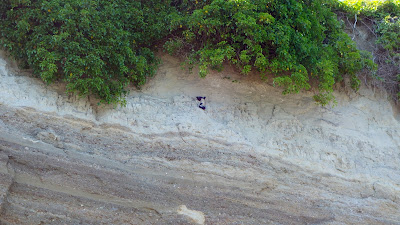I spend a lot of time paddling and walking the shorelines of Seattle's Salmon and Shilshole Bays and thinking about now and then perspectives.
While browsing the Seattle Public Library Special Collections online last night I came across these images I've never seen before titled - Tillicum towing Kitsap out of Ballard, 1916 (spl_shp_40570)
And just behind the Kitsap is a dredger probably working to clear a channel below the newly constructed Ballard Locks just upstream.
The image is shot from Magnolia looking NE towards Ballard and Sunset Hill.
For me, there's a lot going on in these image. It's not just a majestic ship being towed out of Salmon Bay but I wonder if the foreground is Salmon Bay Charlie's (Hwehlchtid) land protruding into the channel before it was dredged?
In the horizontal image the train bridge at NW 61st St is a bit further down to right suggesting that this could be Charlie's later dredged spot.
Comparing a popular image of his place (below), the large cleanly cut beach log in the foreground looks familiar. But this image is in 1905 and the Kitsap images (above) are 1916. The above images face the opposite direction.
I've been researching the Ballard shoreline where I spend a lot of time in the Elks Lodge and adjacent beach as an Elks Member and for my paddling business, Salmon Bay Paddle. The Elks Lodge would be built in the 1960's in the space between the dredger and the Kitsap.
And further in the distance on the hill above the now Golden Gardens Park is a full growth of probably old growth trees, unlike the scene further to the south or (right) which was mostly logged in the 1870's.





















